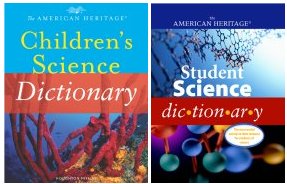Healing honey Additional Information
The National Honey Board provides lots of information about honey, along with news reports, pictures, videos, and recipes at www.honey.com/.
To learn more about the honey from New Zealand that heals wounds, and more, visit the Web site of the Waikato Honey Research Institute at www.bio.waikato.ac.nz/honey/.
Find basic facts and history about honey at en.wikipedia.org/wiki/Honey(Wikipedia).
Learn more about antioxidants at en.wikipedia.org/wiki/Antioxidant(Wikipedia).
For more about the common cold, visit www.commoncold.org/undrstnd.htm (Commoncold.org) and www.kidshealth.org/kid/ill_injure/sick/colds.html (KidsHealth for Kids).
A poem by Ogden Nash about the common cold can be found at www.cs.rice.edu/~ssiyer/minstrels/poems/325.html (Rice University).
You can learn all about the flu at www.pbskids.org/zoom/fromyou/survey/flu_facts.html(PBS Kids).
Raloff, Janet. 1998. The color of honey. Science News 154(Sept. 12):170. Available at http://www.sciencenews.org/sn_arc98/9_12_98/bob1.htm.
Sohn, Emily. 2008. Sweeeet! The skinny on sugar substitutes. Science News for Kids (Jan. 9). Available at http://www.sciencenewsforkids.org/2008/01/sweeeet-the-skinny-on-sugar-substitutes-2/.
______. 2007. Sweet, sticky science. Science News for Kids (March 14). Available at http://www.sciencenewsforkids.org/2007/03/sweet-sticky-science-3/.
______. 2006. Flu patrol. Science News for Kids (Jan. 4). Available at http://www.sciencenewsforkids.org/2005/12/flu-patrol-2/.
______. 2005. Nature’s medicines. Science News for Kids (June 1). Available at http://www.sciencenewsforkids.org/2005/05/natures-medicines-2/.
______. 2005. Chocolate rules. Science News for Kids (Feb. 9). Available at http://www.sciencenewsforkids.org/2005/01/chocolate-rules-2/.
______. 2003. Fighting off micro-invader epidemics. Science News for Kids (Nov. 5).
Available at http://www.sciencenewsforkids.org/2003/11/fighting-off-micro-invader-epidemics-2/.
Books recommended by SearchIt!Science:
![[book]](https://www.sciencenewsforstudents.org/wp-content/uploads/2019/11/a1657_b1289.jpg) |
How Bees Make Honey— Michael Chinery
Published by Benchmark Books/Marshall Cavendish, 1997.
Sweet, yummy honey! Bees have been hard at work! The book takes you into the life of a honeybee. With full-color illustrations and lots of informative text, you will learn everything about bees, from how they take nectar from a flower to the different types of bees and their functions in the hive. Learn about honey in history and how honey is made today. |
![[book]](https://www.sciencenewsforstudents.org/wp-content/uploads/2019/11/a1657_b2347.jpg) |
The History of Medicine— Lisa Yount
Published by Lucent Books, 2002.
Explore more than 4000 years of medicine, from the traditions passed down by the Chinese and Indians to the specializations of Western medical practices. Some sections of this book excerpt early writings on such topics as surgery while others focus on such modern developments as organ transplants and gene therapy. The book also covers various plagues and the research that led to treatments for the diseases caused by them. Part of World History Series. Includes notes, glossary, and bibliography. |
![[book]](https://www.sciencenewsforstudents.org/wp-content/uploads/2019/11/a1657_b3169.jpg) |
Common Cold and Flu— Alvin Silverstein
Published by Enslow Publishers, 1994.
Achoo! When you sneeze, you can release thousands of particles into the air! Sneezing helps you get rid of irritating substances before they can get trapped in the lungs. Sneezing is one symptom of the common cold. Over the years, people have treated colds by using bloodsucking leeches, applying mustard plasters, wearing garlic necklaces, or even “kissing the hairy muzzle of a mouse!” Now, we know that getting plenty of rest, fluids, and nutritious food, as well as keeping warm, are the best ways to cope with a cold. Here, the authors describe colds and how they’re spread, treated, and prevented. Learn about the differences between a cold and the flu The last part of the book includes several pages of questions and answers about colds, a list of further readings, a timeline of events related to the cold and flu, and a glossary. |
Power Words
antioxidant A chemical compound or substance that inhibits oxidation. Certain vitamins, such as vitamin E, are antioxidants and may protect body cells from damage due to oxidation.
oxidation 1. The combination of a chemical element or a chemical compound with oxygen. Rust comes from the oxidation of iron. 2. A chemical reaction in which an atom loses electrons.
microbe A microscopic organism that can cause infection or disease.
placebo A substance that is made to look like a medicine but contains no medical ingredients. To research how well a medicine works, scientists give one group of people a real medicine and another group a placebo. Scientists then record the results from both groups of people and decide whether the group that took the real medicine did better than the group that took the placebo.
Copyright © 2002, 2003 Houghton-Mifflin Company. All rights reserved. Used with permission.
